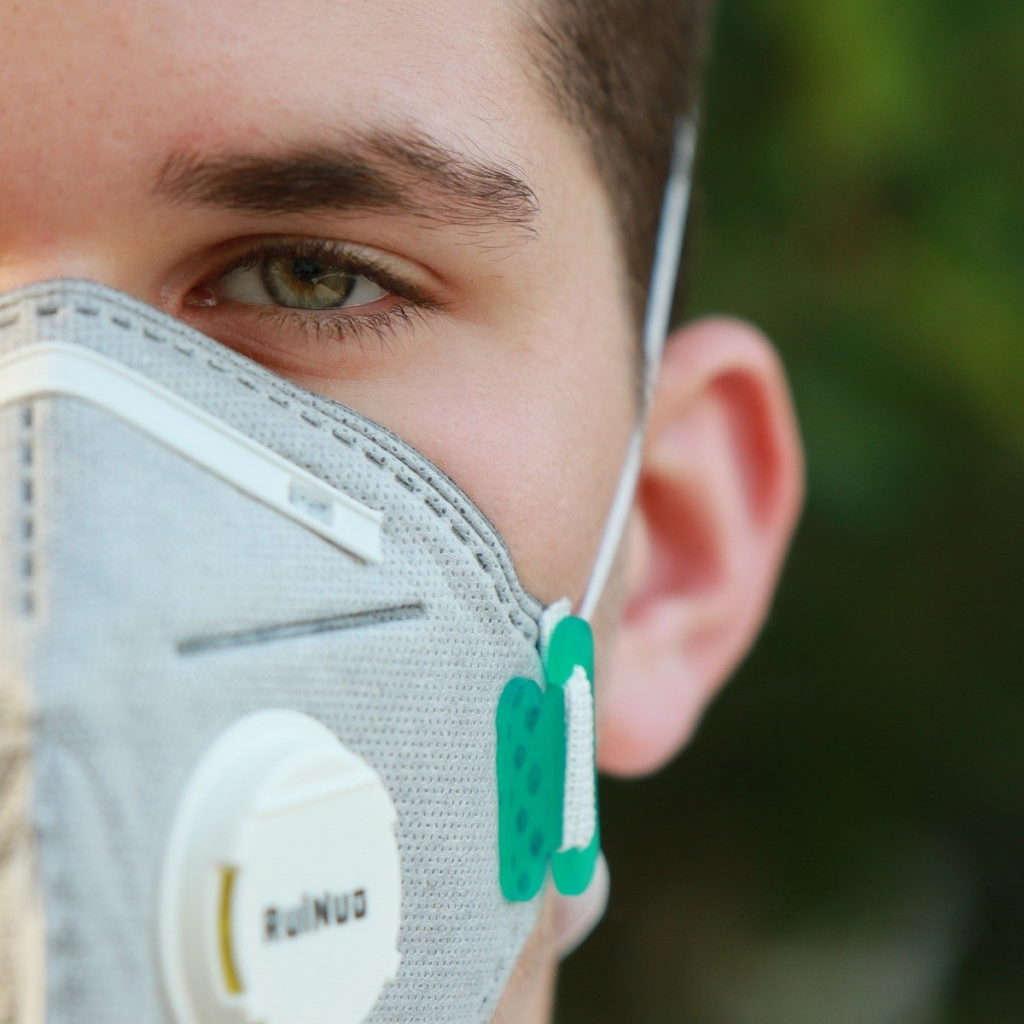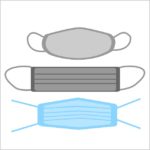Compare Surgical Masks and N95 Masks
There are notable differences between masks when it comes to infection control. Let’s take an in-depth look at:
- What is a Surgical Mask and how well does it work For viruses?
- What is an N95 respirator mask and how well does it work for viruses?
- What is melt blown fabric?
- Are goggles required for full protection?
What is a Surgical Mask?

Surgical masks are loose fitting and designed to keep droplets in, and are intended to keep the wearer from getting others sick. Medical workers wear surgical masks to keep patients from being infected with pathogens and germs. If someone wearing a mask sneezes or coughs, the close covering means that most of the moisture droplets are stopped by the mask. This protection only works if the wearer changes the mask frequently and disposes of it safely. In surgery, doctors must change their mask at least every two hours. If a mask of this type is worn repeatedly, it loses its effectiveness.
Make masks for your family or for donation. See our page full of tutorials and tips.
How Well Does A Surgical Mask Work For Virus Protection?
Wearing a surgical mask can protect you against droplet and smear infections, but to a limited extent. A surgical mask cannot filter very tiny particles transmitted by sneezes and coughs. Surgical masks also don’t provide complete protection from contaminants because of the loose fit between the face mask and your face. The particles of Coronavirus measure 0.1 micron, much smaller than the 0.3 micron particle blocking capacity of most masks. That mean that the coronavirus particles are smaller than those filtered by most surgical masks, so they can help, but there is no guarantee they will block the virus.
What is an N95 Respirator Mask?

N95 Respirator masks are shaped like a cup and are tight-fitting masks. They force all air through a filter designed to block 95% or more of 0.3 micron test particles. They must be properly fitted and tested for leaks before considered safe. This is the type of personal protection equipment (PPE) medical professionals wear when treating patients with a contagious disease. You have to wear a medical grade respirator to protect both the wearer from getting sick, and the patient from the wearer’s germs.
How Well Does an N95 Respirator Work For Virus Protection?
To earn a “N95” designation Medical grade respirators must filter 95% or more of particles that could potentially be inhaled. This is the biggest difference between masks. Depending on the respirator, the particles it can filter could be thousands of times smaller than a human red blood cell. Because of the completeness of the filtration and the tight seal, N95 respirators may be uncomfortable. People may experience difficulty breathing and the Food and Drug Administration (FDA) urges caution to people with respiratory (breathing) and cardiac (heart) issues. If you have either one of those conditions, you should consult a doctor before wearing a mask.
Only masks rated at the level of the N95s Medical Respirators (US) and the FFP-3 filtering face piece (EU) will protect the wearer from droplet aerosols, viruses, bacteria, protein molecules, spores and fungi, highly dangerous asbestos fiber dust, and even infectious pathogens such as measles or tuberculosis.
What is Melt Blown Fabric?
The technology used for filtration in surgical masks and N95 respirators is dependant on “melt-blown fabric.” This fabric is created in a costly process in which a microscopic plastic mesh is constructed from fibers. Each filament measures less than one micron in diameter and is woven into a mesh to make up the inner core of the PPE filter. The more layers of melt blown mesh a mask has, the better it can protect against miniscule particles. Most surgical masks are constructed from several thin layers, and most “N95” respirators are made of five to six layers varying in stiffness and density.
Are Goggles Required For Full Protection?
Yes! This is critical. Mask and respirator protection only work if all other necessary protective measures are followed at the same time. Strict hygiene protocol to be followed when putting on a mask is:
- Wear protective goggles
- Wear gloves and plastic apron or overall
- Practice proper disposal of possibly contaminated items
- Regular hand washing
- All surfaces in all areas systematically disinfected
